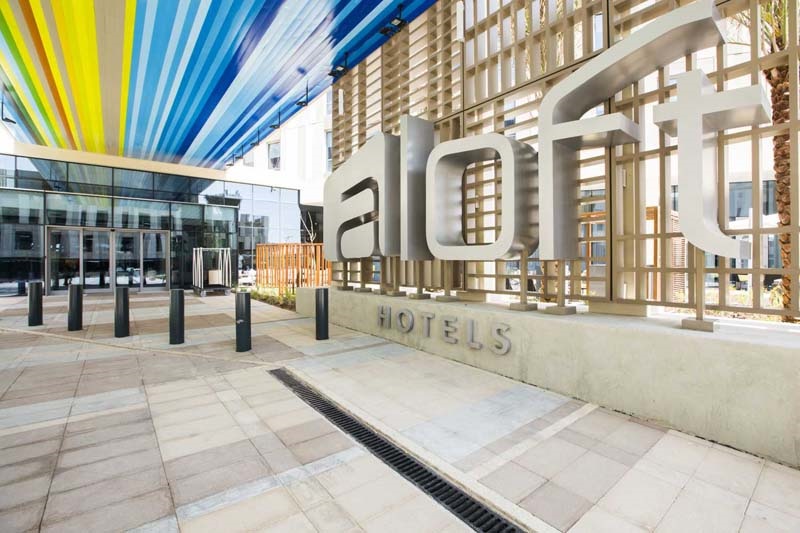Armed with decades of experience specialising in marketing for Starwood’s corporate regional offices, both in Europe and in the Middle East, Aloft Al Ain general manager Andreas Plum is proving to be the ideal spokesperson for the brand, its origins and ambitions and how his new hotel is aligning, Aloft-style.
“Aloft was developed as an original brand to initially replace motels in the US — take properties with very functional space, usually located along a highway in the middle of nowhere in the desert, and create something very fresh, very different, at the right price point,” Plum says, during a recent visit by Hotelier Express to Al Ain.
“And that’s been so successful that the brand got elevated into bringing urban sophistication for a smaller market. This brand being present in Al Ain is a great example because there’s nothing like it here.”
In describing Aloft Al Ain, Plum mentions that the property acts as an embodiment of the brand’s three major ‘passion points’, namely, design, technology and music. However, he adds, slight variations from brand standards also exist in the hotel to accommodate local dictates.
“Aloft is a brand that wants to be different. One of our taglines is ‘Different. By Design’ so everything should be slightly different,” Plum explains.
He continues: “Design-wise, this brand has always been about open spaces for open-minded travellers. This means high ceilings, vaulted ceilings, colours that are a bit more funky than you would normally see in other hotels. The design of the guestroom itself, for instance. When you look at the individual elements of the room, at first you may think it’s a bit too busy but when you spend some time in it, you’ll find that it does work. There is cohesion in the design.”
“Will there be some people who may think that it’s too colourful? Maybe,” Plum chuckles. “And that’s okay.”
Plum expounds on the hotel’s design narrative by hospitality specialist Kinnersley Kent Design and its impact: “Normally, this W XYZ bar would be inside the lobby, which is typical in the Middle East and here, it is somewhat semi-detached. The guestrooms are bigger and wider, which makes a big impact, because there’s actually a lot of space around the bed and you have a bigger walk-in shower.”
He elaborates: “Aloft was meant to be a replacement brand for motels and motels don’t really have a lot of dining venues, but that’s considered essential here in the Middle East. So, Olive Tree, our all day dining restaurant and The Rooftop lounge and bar, these really are add-ons but which still stay true to the brand. These were concepts which were developed by the designers with input from the Starwood design team. Then what we do is the layering on, the designing of the food menu, food and beverage concepts and so on.”
“We’re not going to do runway fashion shows but we’re looking at ways into how we can somehow take the design of the building into the hotel operations,” he adds.
Plum explains how the hotel’s food and beverage offerings will take design as a brand ‘passion point’ very seriously. “We’re taking this into food design, how food is being presented — first, it has to taste good but it also has to look good. We’re not going to go Michelin star but we’re going to find a way to keep it within the Aloft brand.”
Technology is another area which stays true to the Aloft brand, with Plum mentioning that he and his team tried to bring “Botlr”, the brand’s robot butler service rolled out in select Aloft hotels, into his property but were unable to, because, according to him, “that needs to be decided very early in the development of the hotel”. Nevertheless, he cites fast and free wireless internet connectivity in both front and back of the house, utilising iPads for the housekeeping team’s property management systems and LED display screens in the kitchens as among the hotel’s technological innovations being deployed to enhance efficiency in hotel operations.

| Advertisement |











 Search our database of more than 2,700 industry companies
Search our database of more than 2,700 industry companies









